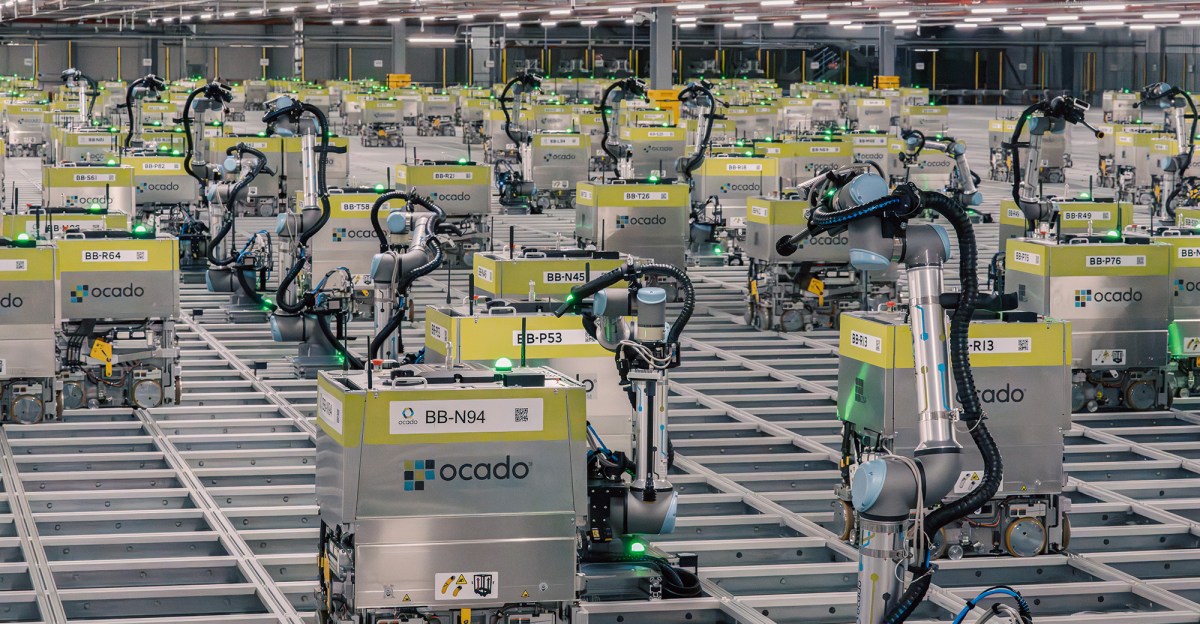Key Points
- The Grid uses hundreds of robots to move grocery trays under central computer control.
- On‑Grid Robotic Pick arms, equipped with suction cups and cameras, have packed over 30 million orders.
- OGRP arms currently handle about 40 percent of items, with a target of 80 percent in 2‑3 years.
- Ocado plans to install nearly 500 OGRP arms by year‑end.
- Specialized attachments are being developed for challenging products like wine bottles.
- Automation extends to inbound unpacking, trolley loading, and mobile van‑loading robots.
- Ocado invests in autonomous‑driving startups but does not expect full driverless delivery soon.
- New lighter 3D‑printed robots enable more compact, modular warehouse designs.
- Human workers remain essential for the remaining edge‑case tasks and difficult‑to‑automate items.

The Grid and Robotic Fleet
Ocado’s fulfillment center in Luton operates a sprawling system known as the Grid, a criss‑cross of tracks that guides hundreds of blocky robots. These robots transport custom‑built trays containing a wide range of grocery items, moving them from storage points to workstations under the direction of a central computer that prevents collisions. The Grid forms the backbone of the warehouse’s automation, allowing a small human workforce to focus on tasks that still require manual handling.
Introducing On-Grid Robotic Pick
Recent upgrades have added On‑Grid Robotic Pick (OGRP) arms to the Grid. Each arm features a suction cup and a camera that together enable it to grasp items and place them directly into customer bags. Currently, 65 OGRP arms operate alongside roughly 500 original robots. Even with fewer than 100 arms, the system has packed over 30 million orders, handling about 40 percent of the groceries today. Ocado expects to have almost 500 arms installed by the end of the year and aims to increase the packing share to roughly 80 percent within the next two to three years.
Scaling Automation and Future Goals
Ocado does not intend to automate every single item. Heavy or delicate products such as wine bottles and watermelons present challenges for the current suction‑cup design. The company is developing a dedicated attachment for wine bottles but considers it uneconomical to create a special tool for one‑off items like watermelons, leaving those to human packers. The AI models that drive the robots have learned to handle tricky cases, such as lifting bags of oranges by gripping the label, demonstrating the system’s capacity to adapt to edge cases without human re‑programming.
Broader Automation Strategy
Beyond picking, Ocado is exploring automation for other warehouse functions, including inbound shipment unpacking, loading heavy metal trolleys onto delivery vans, and a mobile robot designed for van loading. While the company invests in autonomous‑driving startups Wayve and Oxa, it does not expect fully driverless deliveries to become commonplace in the immediate future, recognizing the customer‑facing nature of that step.
Challenges and Human Role
Automation helps address labor‑intensive roles, especially in cold‑storage environments where staffing is difficult. Ocado’s business model separates technology provision from day‑to‑day warehouse operation, meaning that client retailers handle employment matters. The company continues to expand its sites, R&D efforts, and remote support staff. New lighter, 3D‑printed Cartesian robots, weighing a third of earlier models, are being introduced to reduce collision risk and enable more compact, modular warehouse layouts. However, Ocado acknowledges that the remaining 10 percent of problems—such as unusual crate shapes causing jams—still require human intervention, underscoring the ongoing partnership between robots and people.
Source: theverge.com
